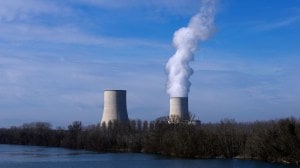Mapping peace
The official US map of ‘‘The Disputed Area of Kashmir’’, a report of which was carried in the Sunday Express — woul...

The official US map of ‘‘The Disputed Area of Kashmir’’, a report of which was carried in the Sunday Express — would no doubt raise many concerns in many quarters. The nationalist in India would be unhappy with J&K being mapped as a disputed area and, more especially, with Pakistan Occupied Kashmir not being shown as part of India. The objective observer would be unhappy with the Siachen region, east of Saltoro Ridge, being shown as occupied by India since 1984 and would argue that this area has always been administered by India and this was brought home to the Pakistanis during bilateral negotiations on the Siachen issue. The Pakistanis would no doubt recoil with concern at the recognition of Indian sovereignty over a region that Islamabad has sought for five decades. While some Americans may also quibble about the map, the strategic thinktanks in the US are beginning to focus on the ‘‘post-conflict’’ economic development of Kashmir rather than seeking their traditional ‘‘solutions’’ of the issue.
After the US demonstration of its awesome power and willingness to use it in Iraq, people in both Pakistan and India have been concerned with the likely pressures in finding a solution to the Kashmir issue. But the official map seems to indicate the likely US position on the issue, even if this is low-key map diplomacy. Quite obviously, if we go by the official US map, the valley of Kashmir remains part of the ‘‘Indian’’ state of J&K, thereby conceding Indian sovereignty over the area east of the LoC. In many ways the US position on the map is consistent with what Washington has been saying since the Kargil war three years ago. The emphasis has been on maintaining the sanctity of the LoC. This is also what New Delhi has insisted upon. This sanctity can be preserved only if no force or political-diplomatic actions are employed to alter it. This was the essence of the Simla Agreement.
There is a need to remember that even an official map does not automatically translate into policy. It would be premature, even counter-productive, to talk of converting the LoC into an international border without Pakistan ensuring that it does not seek to interfere across that border. After all, the terrorism pursued by Pakistan in Punjab for nearly a decade was across a well-recognised international boundary. But it does indicate the direction Washington’s diplomacy may take in the coming days. The focus of US policy is likely to remain on the lowering of tensions between the two countries, and this cannot be achieved in any meaningful way without rolling back and ending terrorism from Pakistan as General Musharraf promised last year. In return India concedes the oft-repeated Pakistani demand of starting a dialogue to resolve all issues.
Photos


- 01
- 02
- 03
- 04
- 05





























